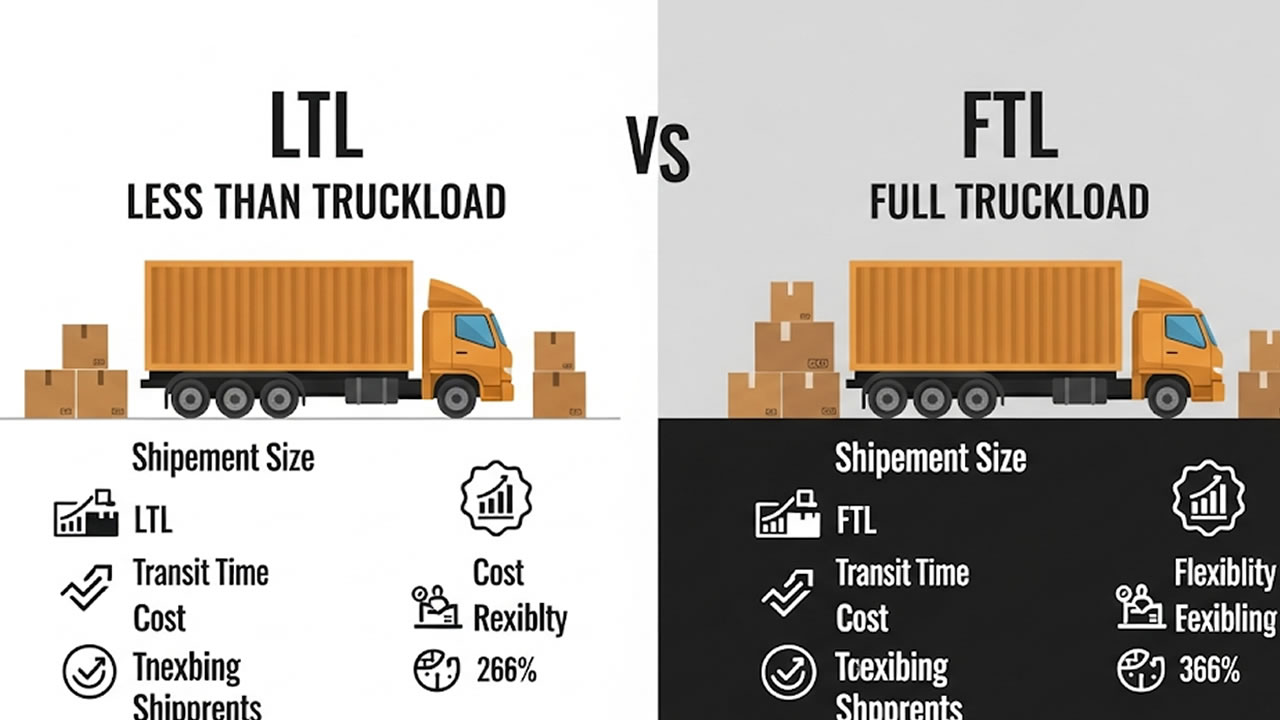Truckers who know the difference between Less Than Truckload (LTL) and Full Truckload (FTL) shipping are able to fulfil their main goal which is to optimize routes. Truckers aim to boost earnings and offer better service through route optimization. Each shipping type comes with its own benefits, challenges, and operational requirements. This guide outlines the most important things truckers need to understand regarding LTL and FTL so they can make informed decisions in their day-to-day operations.
What is LTL Shipping?
LTL, or Less Than Truckload, are shipments that are not large enough to fill a trailer and so several such loads can be combined and a single truck delivers them. In other words, these are the loads that are mixed with other shipments heading in the same direction, allowing multiple customers to share truck space. LTL shipments are typically combined with other loads, meaning drivers often deliver freight to consolidation points for reloading. While this may require additional stops and detours, it also provides more frequent work opportunities and the ability to haul multiple shipments in a single trip — ideal for those who prefer local routes and flexible schedules.
Understanding FTL Shipping
FTL (Full Truckload) shipping involves transporting a shipment for one client that fills the entire truck. This type of shipment typically travels directly from pickup to delivery without intermediate stops, reducing handling and delays. FTL shipments usually involve longer routes with direct delivery from pickup to drop-off. Since the freight stays on one truck without transfers, handling is minimized; this often results in better fuel efficiency.
Pros and Cons for Truckers
There are pros and cons for both LTL and FTL. LTL can provide more frequent load opportunities, leading to consistent pay-outs and new, varied routes; however, it requires more time coordinating loading and unloading. FTL often offers higher payment for the distance driven and reduces the risk of damage since the freight remains on one truck. However, these runs may keep you away from home for longer hours. To provide a higher payment for the distance driven and reduce the risk of damage because the freight remains in one truck, however, these runs may keep you longer hours away from home. Drivers should consider their personal preferences, experience, and schedules when deciding which load type suits them best.
How to Choose Between LTL and FTL Loads
The decision between LTL and FTL is mainly driven by the type of business, equipment, and your goals. If you have a smaller truck or prefer local routes, LTL will be a better fit for your operations. On the other hand, if you are the owner of a big trailer, enjoy driving long distances, and are only after the most profitable option, then Full Truckload may be the better choice. Many truckers take on both types of loads and put in extra effort to maximize earnings and stay competitive with market trends.
Why This Knowledge Matters
Truckers who understand both LTL and FTL shipping methods can make more strategic decisions, increase efficiency, and build a successful freight career. The ability to implement LTL’s fast turnovers or FTL’s direct, stable routes is the very core of having a solid understanding of these load types that will help you make the right decisions, increase your earnings, and establish a promising career in trucking.
Disclaimer: The information provided in this blog post is for general informational purposes only. While we strive to keep the content accurate and up to date, we do not guarantee its completeness, reliability, or accuracy. Any actions you take based on this information are strictly at your own risk. We are not responsible for any losses, damages, or inconveniences that may arise from the use of this blog. For professional advice, please consult a qualified expert.


